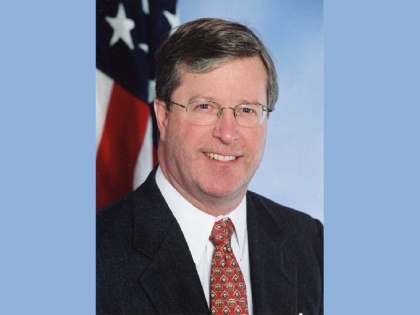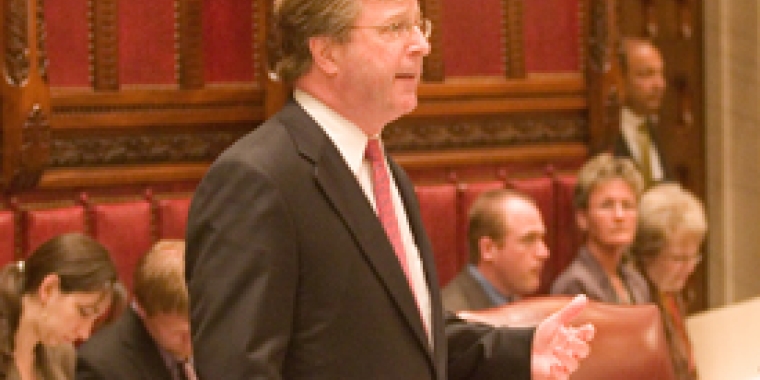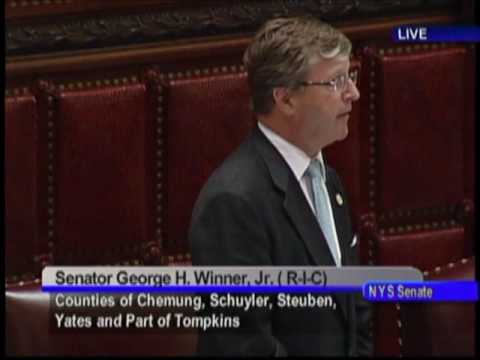
Cameras In The Courtroom?

If you keep at something long enough in our legislative process, it’s day usually arrives. Sometimes it takes years, but the lesson you learn is to just keep at it. I think we’re on the verge of one of these days on an issue commonly called "cameras in the courtroom."
From time to time, I’m still asked this question: should New York lift its ban on television coverage of the state’s trial court proceedings?
Interest in this long-standing debate often gets revived in the wake of a sensational trial or when a state court addresses a case involving the existing ban. In June 2005, for example, New York’s highest court, the Court of Appeals, heard arguments in a lawsuit brought by Court TV. Court TV argued that the existing ban violates the constitutional guarantees of free speech and free press. Lower courts had previously upheld the state’s right to ban audio-visual coverage of trials. And in the Court TV case, the Court of Appeals agreed and upheld the ban. Furthermore, the Court flatly tossed the debate back into the legislative arena by ruling that the Legislature, not the courts, should decide if televising trials is in the public interest.
So now the Legislature may decide. There appears to be strong bipartisan legislative support to act. It’s also important to note that Governor Eliot Spitzer and New York Chief Judge Judith Kaye are supportive.
New York is one of seven states that do not allow cameras in the courtroom. The ban was first imposed in 1952. Newsreel and still cameras were allowed in most courtrooms at a judge’s discretion prior to the late 1930s. In 1935 the highly sensationalized proceedings surrounding the Lindbergh kidnapping trial prompted the American Bar Association (ABA) to recommend restricting media coverage of judicial proceedings. In 1937 the ABA revised its Canons of Judicial Ethics to ban the photographing and broadcasting of court proceedings. Coinciding with the rise of television’s popularity, these ABA ethics were revised in 1952 to include a prohibition on television coverage. This prompted many states, including New York, to adopt statutes to prohibit the televising or broadcasting of court proceedings.
Electronic coverage of New York’s courts was finally authorized by the Legislature on an 18-month experimental basis beginning on December 1, 1987. I was one of the sponsors of the 1987 legislation. The experiment was extended four times by the Legislature over the following decade. Throughout this period, legislatively appointed panels that examined the impact of the cameras-in-the-courtroom experiment recommended overturning the ban. The last experimental period concluded on June 30, 1997, and the cameras-in-the-courtroom experiment was allowed to expire permanently. In the wake of the O.J. Simpson trial, many New York legislators were reluctant to continue allowing coverage of trials.
There are many arguments for and against allowing television coverage of the courts. Those in favor often argue that it is a logical extension of what the Founding Fathers meant by free and open trials; that television coverage is the best way to broaden the public’s ability to observe and understand the legal sphere of government; and that heightened public scrutiny will enhance the accountability of the judicial system. Those opposed to cameras in the courtroom usually cite arguments regarding the need to protect defendants, victims and families from privacy invasions and media sensationalism; that cameras scare off witnesses; and that the presence of cameras is not as educational as proponents claim.
Personally, I’m a longtime advocate of allowing television coverage of our courts. I have always been satisfied that New York State’s cameras-in-the-courtroom experiment achieved its primary goal to heighten the public’s understanding of the state’s legal principles and court processes, and it did so without damaging the integrity of the courts.
So I’m currently co-sponsoring legislation in the Senate that would authorize cameras for a two-year period. This legislation would resume the state’s cameras-in-the-courtroom experiment as it existed in 1997, but with additional, stronger safeguards for children, crime victims and family court litigants, among other guidelines.
"New York should finally embrace the 21st century and allow cameras in its courtrooms," is how the issue was framed by one newspaper editorial I recently read. I agree, and I also believe it’s day in the legislative process may be arriving once again.



